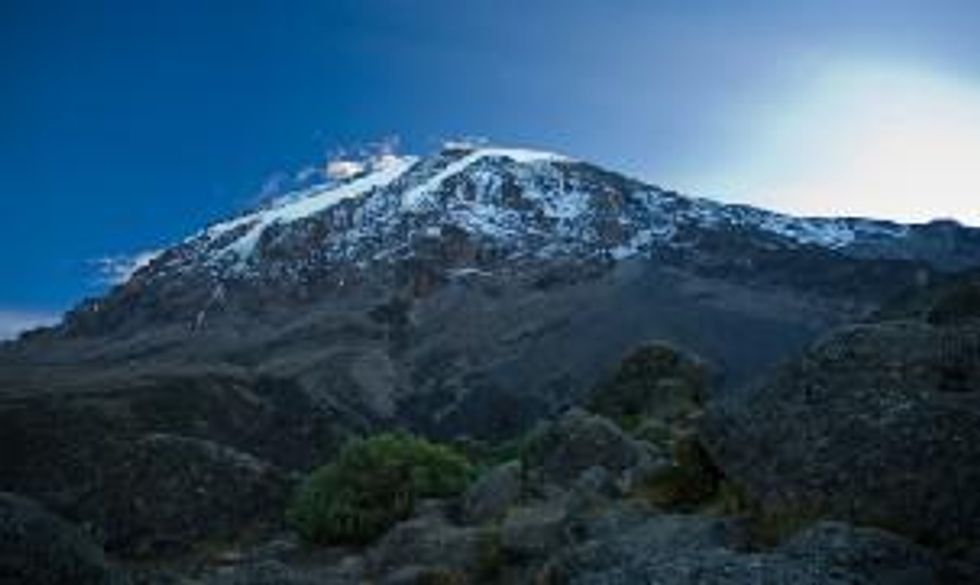Tanzania is the third largest producer of gold in Africa after South Africa and Ghana and is also well known for the Tanzanite gemstones. In addition to gold, the country has expansive amounts of natural resources including gas, uranium, diamonds, coal, iron ore, nickel, copper, chrome, tin, platinum, coltan, niobium, kaolin and other minerals.
Tanzania is the third largest producer of gold in Africa after South Africa and Ghana and is also well known for the Tanzanite gemstones. In addition to gold, the country has expansive amounts of natural resources including gas, uranium, diamonds, coal, iron ore, nickel, copper, chrome, tin, platinum, coltan, niobium, kaolin and other minerals.
Tanzania has long been considered one of the oldest known continuously inhabited areas on Earth, with remains of fossilized pre-human hominids and humans having been found dating back over two million years. Given the considerable historic setting, gold exploration and mining has been a relatively recent development. The earliest organized prospecting and mining in Tanzania began with gold discoveries in the Lake Victoria region in 1894 during the German colonial period. Mining began at the Sekenke Mine in 1909, after gold was discovered there in 1907. During the First World War, gold from Sekenke was used to mint coins to pay German troups fighting against the allied forces in the Belgian Congo. Sekenke was developed as an underground mine, reaching up to 200 metres below surface and produced 140,000 ounces of gold.
After 1930, gold production in Tanzania was substantial and increased steadily until World War II. By 1967, the gold industry had declined to insignificance, only to revitalize during the mid 1970’s when the world gold price increased greatly. Beginning in April 1990, the Bank of Tanzania began buying gold at the world market price through commercial banks. In the late 1990′s, several mining companies from Canada, United Kingdom, Australia and South Africa arrived in Tanzania, interested in gold exploration and development.
Geopolitical and Economic Context
Each year the World Bank creates an index to monitor 183 countries in order to calibrate the relative complexity and difficulty of doing business within national jurisdictions. This index averages the country’s percentile rankings on 9 metrics, made up of a variety of indicators, giving equal weight to each topic. Although this analysis of business regulation and protection of corporate property rights is primarily intended for medium and smaller sized firms, potential investors might be interested at the relatively high score that the country received in terms of enforcing contracts. Tanzania placed 32nd in the world, well within the top quartile and ahead of many prolific gold producing countries such as Argentina, Brazil, Chile, Ecuador, Indonesia, Mexico, Papua New Guinea, and Peru.
Tanzania remains in the lowest 10 percent of global economies in terms of per capita income; however, the country has endured the recession relatively well. The economy is heavily dependent upon agriculture, which accounts for more than a quarter of GDP, providing 85 percent of exports, and employs 80 percent of the work force. Topography and climatic conditions, however, limit cultivated crops to about 4 percent of the land area. Industry traditionally featured the processing of agricultural products and light consumer goods. The World Bank, bilateral donors and the International Monetary Fund (IMF) have provided funds to rehabilitate Tanzania’s aging economic infrastructure and to alleviate poverty. Long-term growth through 2005 featured a pickup in industrial production and a substantial increase in output of minerals led by gold. Recent banking reforms have helped increase private sector growth and investment. Solid macroeconomic policies combined with continued donor assistance supported a positive growth rate, despite the world recession.
Mining and Exploration Developments
Under a subsidiary, Barrick Gold Corp. (TSX: ABX) operates four producing mines in northwest Tanzania: North Mara, Bulyanhulu, Tulawaka and Buzwagi. Last year the company reported 16.8 million ounces of proven and probable gold reserves and the company currently maintains exposure to 2 exploration properties within Tanzania. Production in 2009 was 716,000 ounces of gold at total cash costs averaging $545 per ounce. In late November, Barrick was featured among the top 100 companies in the world for its sustainability, reporting and performance by the NASDAQ Global Sustainability Index. Currently, Barrick is the only Canadian mining company included in the recent semi-annual listing of leading companies.
South Africa based, top producing gold miner AngloGold Ashanti (NYSE:AU) owns the Geita open pit mine located in the Geita District of the Mwanza Region. The Geita operation under performed in 2009, producing 272,000 ounces of gold for the year, short of the anticipated 315,000 ounces. Earlier in March of 2010, an incident with a number of robbers attempting to acquire explosives raised some questions in regards to the security at the mine. The company continues drilling a brownfield exploration program with a total of 16,727 meters drilled last year.
Resolute Mining Limited (ASX:RSG) operates the Golden Pride mine located 750 kilometers northwest of the port of Dar es Salaam and 200 kilometers south of Lake Victoria. Last year the Golden Pride gold mine produced 148,675 ounces at a cash cost of $488 per ounce. The company also operates productive mines in Australia and Mali. Resolute expects this year will demonstrate an increase in gold production with ore grade from the open pit increasing as fresher ore becomes exposed from a central pit.
Shanta Gold Limited (LON:SHG) is an exploration and development company, with a portfolio of four projects consisting of 40 prospecting licenses, covering a total surface area of approximately 1,394 square kilometers. Last week the company announced the completion of a preliminary feasibility study (PFS) and the submission of three mining license applications and an Environmental and Social Impact Assessment Scoping Report for the Singida mining project in central Tanzania. The company reports that the PFS confirms its project is viable and Shanta is proceeding with a full detailed feasibility study which it anticipates to be completed by the end of June.
Canaco Resources Inc. (TSXV:CAN) is an exploration company with two claims totaling 196 square kilometers, comprising the Handeni Gold Project. The project is located in the Tanga Region of northeastern Tanzania, 130 kilometers north northeast of the city of Morogoro and 30 kilometers south of the town of Handeni.
Lake Victoria Mining Company (OTC:LVCA) has 8 gold exploration projects, consisting of 34 prospecting licenses in addition to a suite of uranium properties. The focus of the company is to acquire prospecting licenses that can potentially be developed into proven reserves or productive gold mines.





